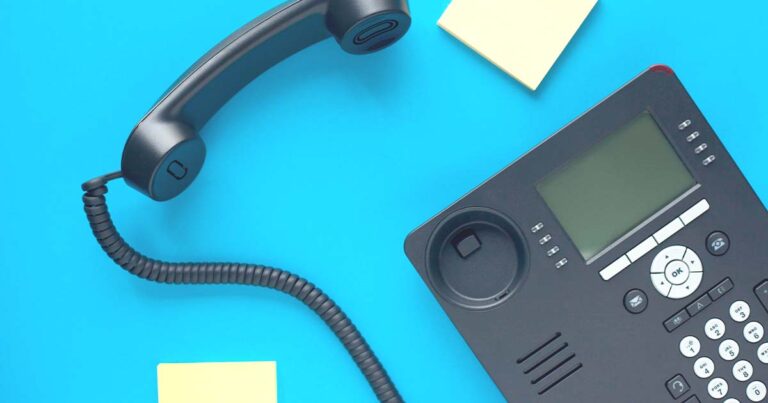Using a Home Phone in 2023

There was a time when home phones were ubiquitous; while you might use a public phone from time to time – presuming you had coins or a phonecard (remember those?) on you – the majority of personal phone calls were made from or to phones set up in our personal residences.
These days mobile phones absolutely rule the roost when it comes to making and taking calls, with more than 90% of us owning a mobile phone, whether it’s a smartphone or a feature phone.
As a result, the role of the humble home phone has been rather deprecated. ACMA figures show that fewer than 25% of Australians use a fixed line home phone at all these days.
They’re less popular than they used to be for sure, but that doesn’t mean that if you’re keen on a home phone line, you’re plumb out of luck. Indeed it’s relatively easy to get a home phone service up and running if you’ve already got (or are getting) an NBN connection. What’s more, it’s generally way cheaper than traditional phone line services used to cost, with many plans charging minimal monthly fees and some having the option of ulimited calls to further reduce your monthly phone bill.
The key aspect to wrap your head around for modern home phones is that in nearly every instance – excluding some truly remote rural areas – you won’t be using the old traditional copper phone lines for the actual call. Instead, you’ll be making and taking your calls using your Internet service, via a technology known as VoIP.
What is VoIP?

VoIP stands for Voice over Internet Protocol, and it’s a technology that (in essence) converts your voice (or the voice or other sounds on a call you’re making or taking) into digital bits that are then sent over the Internet to another device – it could be another landline phone or a mobile phone – where it’s securely decrypted and turned into something that they can hear, rather than just a sequence of ones and zeroes.
The technology is interesting, but for your purposes a VoIP call should act and sound no different at all from a regular voice call over traditional phone lines. You still pick up the phone, dial in a number and get connected. In most cases, the call quality will be no different and may even be improved over the transmission quality of old fashioned copper phone lines.
How do I get a home phone line?
There’s only a few details you need to sort out to get to calling over the Internet using VoIP.
First of all, because VoIP uses the Internet, you’ll need an Internet connection. Most NBN providers do have some level of VoIP integration in their plans; in some cases they’ll directly bundle it in as part of the service, while others may have add-on packs that you can opt for as needed.
Here’s a selection of NBN plans that include VoIP bundling as part of the package:
Most NBN ISPs ship out modem-routers with the necessary hardware onboard for you to simply plug your existing landline phone into the router’s specific socket for that purpose. In some cases, some NBN ISPs may require you to specifically only use their provided modem-router, so if you’re using a different connection device (typically for coverage or speed purposes) you may need to switch back to the supplied ISP modem if you want a VoIP phone line.
If your existing modem-router doesn’t have VoIP hardware – your ISP should be able to let you know – then you’ll need to either acquire one that does, or use an intermediary device that adds that functionality. That’s an ATA – Analog Telephone Adaptor – if needed. Check with your ISP as to their precise VoIP needs in this case to make sure you get a compatible device.
You may also need some hardware around your existing phone. For many you’ll end in a square-ish plug type that slots neatly into the ATA port on your modem-router, but if you’ve got a much older phone it might end in a rectangular plug with prongs sticking out of it. That’ll never go anywhere in your modem without a hammer (don’t do that!), so you’ll need an adaptor or a new cable to ensure connectivity. If it’s fixed in place to the phone itself, you may need to investigate buying a new handset entirely.
In most cases, the VoIP phone line goes with it. A service that needs the Internet to work… requires the Internet to work.
The one partial exception to this is if you’re on an NBN connection using Fibre To the Premises with a battery backup service installed.
However, NBN Co is withdrawing that feature over time, with no new orders available from 26 May 2024, and the entire service decommissioned by 31 January 2031.
Basically, if you don’t already have it, it’s going to be tough to get it sorted before that deadline, and if you’re on any other NBN connection technology such as FTTN, HFC, FTTB, FTTC or Fixed Wireless or Satellite, it’s not available to you anyway.
The best advice we can give if you’re concerned about being able to communicate through blackouts or NBN outages is to spend just a little money on a cheap spare smartphone and PAYG 365 day expiry SIM plan.
Keep the spare phone charged (or keep a battery pack handy) and then it’s there if you need it even if your VoIP service is temporarily offline, without having to spend a fortune on a monthly postpaid service.
Related Articles



